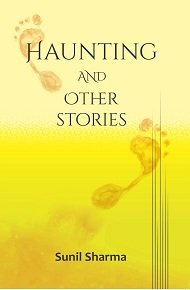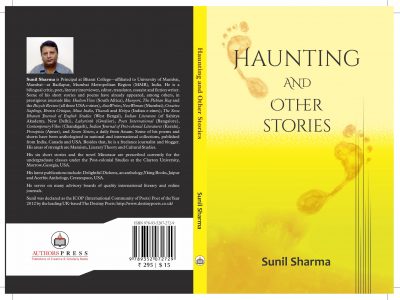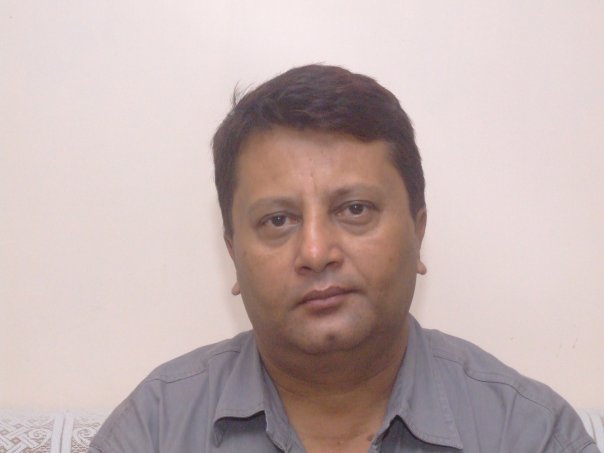Review
by
Rob Harle
Haunting and Other Stories is Sunil Sharma’s latest publication of literary treasures, this time an eclectic collection of truly astonishing short stories. Sharma is a brilliant story teller, he cleverly combines facts and fantasy, hard hitting realistic scenes with deeply emotional personal interactions. His writing style I believe is quite unique.
The use of juxtaposition is a recurring characteristic in all genres of Sharma’s writing, especially his poetry, but also importantly in his short stories. The contrasts which this use of juxtaposition exposes gives his writing powerful impact. It may be concerned with the gross inequities in Indian society, or through the appreciation of small natural things, such as a tiny bird trying to survive in an ugly, overcrowded man made jungle. These contrasts are poignant and create lasting images which force us to face the realities of our contemporary materialistic societies. As Dooley suggests, “Charles Dickens haunts this volume.” (p.6)
Haunting and Other Stories is nicely produced by Authorspress, has a Foreword by Dr Gillian Dooley from Flinders University, Australia, and contains eighteen stories running to 167 pages. As a temptation for prospective readers I’ll briefly list the chapter/story titles. 1 – A story told by a maid-servants preteen daughter. 2 – A teen daughter. 3 – At an Indian police station: Some Philosophical Thought. 4 – At the party and after…. 5 – Borderless. 6 – Change. 7 – Children of the Lethe. 8 – Dream. 9 – Mercy. 10 – Mr Socrates. 11 – Profanities. 12 – Second Chance. 13 – The haunting. 14 – The man who wanted to write like Marquez. 15 – The Meeting with Hemingway. 16 – The Whispering Rooms. 17 – We are no longer afraid. 18 – With Barthes, on boredom.
Sharma is a prolific writer across most genres, and as I mentioned in an earlier review of his poetry, his wide-ranging work is published in anthologies, newspapers, academic journals, online and in books. These works have a global reach and receive excellent critical acclaim not only in his native India but also in the United Kingdom, America, Europe, South Africa and Australia. Sharma does not simply write fiction for fiction’s sake, his work has strong philosophical and moral underpinnings, which are cleverly and covertly woven into the fabric of the stories, with the hope of making this world a better place for all to live.
Sharma lives and breathes literature, his love of this comes through clearly in nearly all his writings. He is highly educated and extremely well-read which gives him a deep connection to other writers. He particularly respects and pays homage to the greats of literature such as Lewis Carroll, Marquez, Dickens, Hemingway, Shakespeare, Tolstoy, Chekov, Sartre, Camus and Gorky. As Gillian Dooley says in the Foreword to this book “Sharma also engages in a most interesting way with the great writers of other nations.” (p.6) “Most interesting way indeed”, I would add to this – possibly in a unique way!
Gorky is perhaps the writer who inspires him the most. The following quotation is from personal correspondence (Sharma-Harle, 2014) and shows clearly, the values Sharma holds, obviously many of these were held by Gorky also:
My love for the downtrodden, workers, toiling women and the underprivileged kids; the brutalization of girl-children and devaluation of women; breaking of the family; cheapening of culture, etc. These issues do not figure prominently in Indian Poetry in English. I call them the Unseen, through empathy we can articulate their pains and joys and express their miserable social conditions. Gorky is my inspiring model, although I am no match to him in any way. My master!
Humility, non-self promotion, and non-self aggrandizement are notable features of Sharma’s personality and I think we should leave it to history to show if he is Gorky’s equal in both vision and literary output.
I am not going to go into great detail in discussing the stories in this collection, preferring to let the reader experience the surprises, pathos, outrage and fast-paced prose themselves. However, I have to say the story, The Meeting With Hemingway is my all time favourite, the way Sharma takes the reader by the imagination, so to speak, and holds us like putty in his literary hands is amazing. This story not only brings Hemingway himself to life, but also in a sense sums up Hemingway’s life and being in a most unusual and subtle way. Brilliant!
Sharma keeps us riveted to the page in all his stories, and at no time does one become conscious of the writing itself, this is probably one of the highest accolades a writer can receive. Half a century ago my writing teacher taught me that the two most important things for a fiction writer are: firstly, not to draw attention to the writing itself, it should be the “artless art”, and secondly, keep you own personal “table-thumping” philosophical beliefs out of the story. People do not want a moral lecture in a fiction story. Even though deep philosophical conundrums underpin Sharma’s thinking he never appears to be “lecturing” the reader, nor giving moral advice, he in a sense implants a suggestion, especially through the previously mentioned art of juxtaposition and then lets the reader do what they will with it. His use of imagery and metaphor to excite the reader’s imagination is wonderful, and every so often a dry, subtle sense of humour reveals itself and adds to the profound sense of liberal humanism characteristic of the stories in this book.
I believe this is one of the most important books in Sharma’s literary career so far, the scope style and sophistication are second to none. Thoroughly recommended to all lovers of good fiction, and to acquisition librarians of colleges and schools to be held in their collections for educational purposes.
Sunil Sharma
An English teacher with more than 23 years of degree-college teaching experience that includes administrative one (as vice-principal and now as full-fledged principal); freelance journalist with 15 years experience writing for the supplements of the Times of India, Mumbai, India and a widely-published bi-lingual writer, poet, novelist, interviewer, blogger, reviewer and literary editor.





No Comments Yet!
You can be first to comment this post!